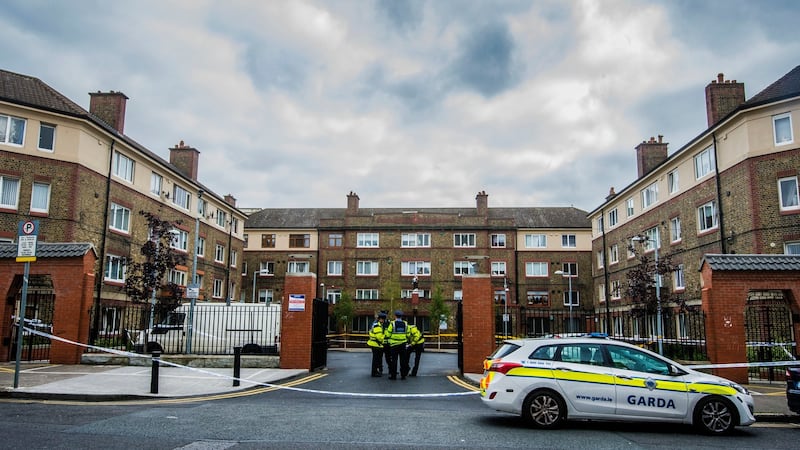In 1888 when Jack the Ripper was stalking the East End of London, Bernard Shaw wrote a brilliantly facetious letter to the press, applauding "the success of the Whitechapel murderer in calling attention for the moment to the social question". He noted "indignant remonstrances, arguments, speeches . . . and statistics; references to reports of inspectors, registrar generals, city missionaries, parliamentary commissions . . . and house-to-house investigations into the condition of the unemployed" had all failed to excite the interest of the press in the poverty of the East End.
“Now all has changed. Private enterprise has succeeded where socialism failed. Whilst we conventional social democrats were wasting our time on education, agitation and organisation, some independent genius has taken the matter in hand, and by simply murdering and disembowelling four women, converted the proprietary press to an inept sort of communism.”
In a similar spirit, we are perhaps obliged to congratulate the Kinahan gang on its success in calling attention for the moment to the social question. Private enterprise has again succeeded where decades of community effort have failed, forcing political and media attention to focus on Dublin’s equivalent of Whitechapel, the north inner city. Again the catalyst for this attention is murder. Crime – the more gruesome the better – is still the best stimulus to the nation’s social conscience.

It is now getting on for 40 years since illegal drugs (primarily heroin) began to devastate Irish inner city communities. Dublin’s north inner city already had long-term problems of poverty, poor educational attainment and mass unemployment caused by the collapse of the market for unskilled manual labour and loss of port jobs. A vicious circle was set in motion: the drug trade fed off social collapse, social collapse fed the trade.
By 2002, a survey of north inner city residents found over half had at least one family member who was a drug user and half of those were long-term addicts.
Drug dealing became a viable career option – more viable, for many kids, than a middle-class profession.
Heroin took over the north inner city because it was pretty much ignored for nearly a decade and community groups trying to respond to it were caricatured as vigilantes and subversives. It became a national issue only because of its association with HIV. It was the threat of Aids that finally provoked some kind of coherent response beyond basic (and uneven) law enforcement. But the response has never been coherent enough. The vicious circle of social deprivation and large-scale drug use has never been broken.
Argued passionately
It is not that there has been any shortage of fine initiatives, from community groups, local authorities, voluntary organisations, the State and the Garda. Pat Rabbitte, Pat Carey and Aodhán Ó Ríordáin, successive junior ministers in charge of drugs strategy, have identified the problems and argued passionately for serious, consistent long-term policies of prevention, treatment and social and educational development. But between 2008 and 2014, the Drugs Initiative budget was cut by 37 per cent. Services are built up, then cut down.
And the State as a whole has attention deficit disorder. Carey was on RTÉ radio’s Late Debate last week and spoke of his own experiences in charge of drugs strategy with an honesty as depressing as it was admirable: “The interagency approach that was recommended in the Drugs Task Force strategy . . . that has never been bought into by some of the key departments of government and the agencies. It is next to impossible to get somebody from the Department of Edu- cation to come and engage meaningfully in Drug Task Force meetings. The Department of Social Protection similarly. Prob- ation service, customs service – it depends far too much on the personality that’s there . . . Unfortunately there is no syst- emic approach to anything . . . I used to chair the overarching body. It met four or five times a year and more often than not there was at least a 30 per cent absence rate from key agencies that ought to be fully bought in to [the strategy] . . . Just a no-show. I thumped the table and called in secretaries general and they’d come for a while and then they’d be gone again.”
Squalid and lonely
I bet they'll all be at the meetings for the next while. Drug trade and the north inner city of Dublin are big news for now thanks to Christy Kinahan and his crew.
The 679 drug-related deaths in Ireland every year are not news – they are quiet and sad and squalid and lonely. They don’t have the drama and intrigue of gang feuds, the lurid allure of balaclavas and Kalashnikovs. In the public arena, these dead men (and they are mostly men) don’t have names, never mind nicknames. But give us some blood on the inner city streets and you have the full attention of the media, the mandarins and the political system. Building drug-resistant communities is a long, hard, complicated and unglamorous business. It should not have to happen in the shadow of the gunmen.











